i designed a university course
Critical Perspectives on Contemporary Culture: Consumers and Communities
Yeah I got bored so I decided to design a uni course. In all honesty I’d been meaning to do this for a while; I had the idea earlier this summer. Here’s a link to the Google Doc and Canva presentation.
In my last year of uni I realised a lot of people really don’t like schoolwork, which is fair. I also realised it wasn’t because they hated learning, but because academic resources are sometimes very inaccessible/daunting to the average person.
A lot of the most engaging classes I was in were as successful as they were because the professor understood the need to meet people where they’re at, and curate learning materials that are engaging for a younger audience.
This isn’t to say that we should do away with academia, journal articles and the likes. I think they’re necessary, especially for those at the upper levels, pushing the frontier of knowledge forward. However, I’ve always said that we need to raise the standard of education, while broadening its accessibility. I think it’s possible to have high-quality resources that have lower barriers to entry.
That being said, this course was designed to be a user-friendly, easy to follow guide to thinking about the intersection of capitalism, culture, art & design. It’s less about what you should think about all that, and more about how you can think about it. This is done by exposing you to various lines of thinking on these topics (hence the “critical perspectives”.)
A lot of resources in this course are ones I’ve referenced over the past 3 years, and I wanted to design something that provides a narrative throughline to cohesively connect these seemingly disparate things that are actually very interlinked.
The main purpose of this course is to be able to expose people to new ways of seeing the world, both on a macro and micro-level.
Week 1: Who Are You?
This week is mainly aimed at getting people to think about what makes them unique. My formula is for that is: what you like + why you like it = who you are.
The resources are a mix of lines of thinking around developing personal taste and compilations of information for deep-dives. I wanted to start with learning about taste because it’s the foundation for all creative expression. We do and make things based on what we like.
I did a presentation in my 4th year communications class on Swag as a metaphor for self-knowledge, and I’m SO sure I came off as an insufferable and pretentious asshole. Which is fair, because it is kinda insufferable and pretentious to present on Swag in a business class. But, in my defence I think it’s essential to map out your swag. The stronger your sense of self, the more confident you are. Self confidence = standing on your swag.
The Good Taste video is one I really like that attempts to break down what taste is, and how you discover your personal taste.
The Yellow Square Archive by Elijah is an archive of questions, statements, and lines of thought on music, art, entertainment etc. I always put people onto Elijah because I think the work he’s doing is amazing and super accessible due to his commitment to open-sourcing.
Week 2: Talk About It
Week 2 continues on taste, and it’s about being able to explain your taste to others once you’ve figured it out for yourself.
I included an article written by me on my worldview, and Virgil Abloh’s lecture at the Harvard Graduate School of Design where he walked students through his creative process, and projects.
Being able to explain your taste is a very important skill because knowing how you see the world is one thing, but being able to clearly communicate that to other people makes it much easier to move through life.
Week 3: Build on It
Closing out Act 1, week 3 is all about being able to build off pre-existing concepts, models and output. If you’ve figured out your references and can explain your taste, the next thing to do is look at how you can pick up where your influences left off.
Weeks 1, 2 & 3 are basically “compile, create and expand” (taste). In that order.
Week 4: Get in Formation
Week 4 begins the transition from the more individual (micro) focus to a community (macro) focus. I wanted to provide some base level info on how communities are formed (physically and socially).
Week 5: Smarter is Better
Building (hehe) off the previous week, this section focuses on urban design. I’ve done a lot of research on urban design and city planning, because it plays such a huge role in our quality of life. It also provides context to how social systems are formed.
This is important because it determines the physical spaces in which culture can thrive. A lot of people don’t have the words to explain what they want out of their cities and immediate surroundings, so I wanted to give a base level crash course in the concepts and terminology.
Demanding and creating change begins with being able to describe what change looks like.
Week 6: Don’t Trust The Internet
After the focus on how society is formed, this week takes us into how society is influenced.
I’ve mentioned Society of the Spectacle to almost everyone I’ve come across in the past year. It’s something that’s heavily influenced how I perceive modern media. It was written during the dawn of the television age, commenting on the potential future of society. It’s ever-important today because of the exponential increase in screens and sources of (mis/dis)information.
The blog post is one I really like and it breaks down some communications theory to help explain how status & identity signalling works.
Knowing specifically how culture is manipulated by media allows you to think beyond those systems and start to scrutinise things more often.
Week 7: Cults!
The last decade saw brands building identities and lifestyles around their products in an attempt to imprint a feeling onto customers and subtly coerce them into buying in.
This week’s resources include two slideshow presentations by Matt Stasoff, a Group Social Strategy Director at Anomaly (an ad agency). I love these slides because they’re kinda all over the place, and they show you the method behind the mess of the internet. Bit of communications, bit of sociology, bit of everything.
The song in here is one I love, it’s a satire about someone getting so engrossed with the internet that he falls in love with it.
Week 8: Making Meaning
The slide explains most of what I want to say. I think projects are stronger when they have supporting documentation. That’s kinda why I’m writing this essay/blog post (lol).
Week 9: Message in a Bottle
Similar to week 8, here I’m just stressing how important it is to preserve what you’ve done (and why you did it) so future generations can make sense of it. The great human project is propelled forward by the progress of culture, and made legible by the preservation of history.
Week 10 - For the Future
This week caps off the course. With this one I was like “okay now you have all this information. What are you going to do with it?”
The two videos for this week contain great concepts and lines of thought regarding building the future. There’s a lot of uncertainty, but there’s also a lot of opportunity. How do you ensure you don’t get the short end of the stick? Build smart.
To conclude, I’m doing all this because I’m trying to consolidate my ideas and references. I want to be able to eat off my work long-term, and the best way to do that is for me to show that none of this is a fluke.
I’ve been doing a lot of thinking about where art, design, politics, and culture intersect. A lot of my work is and will be focused on that.




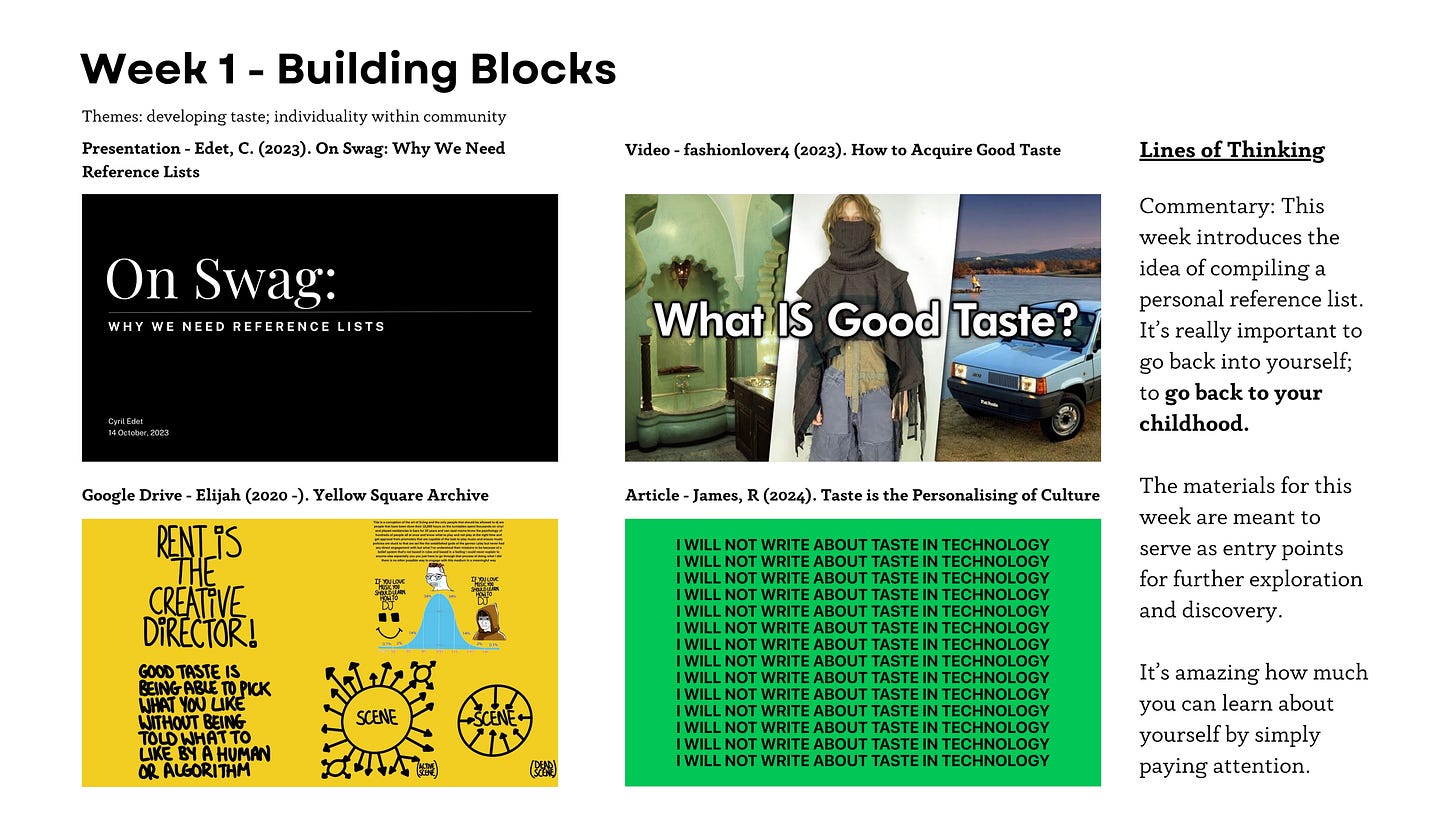

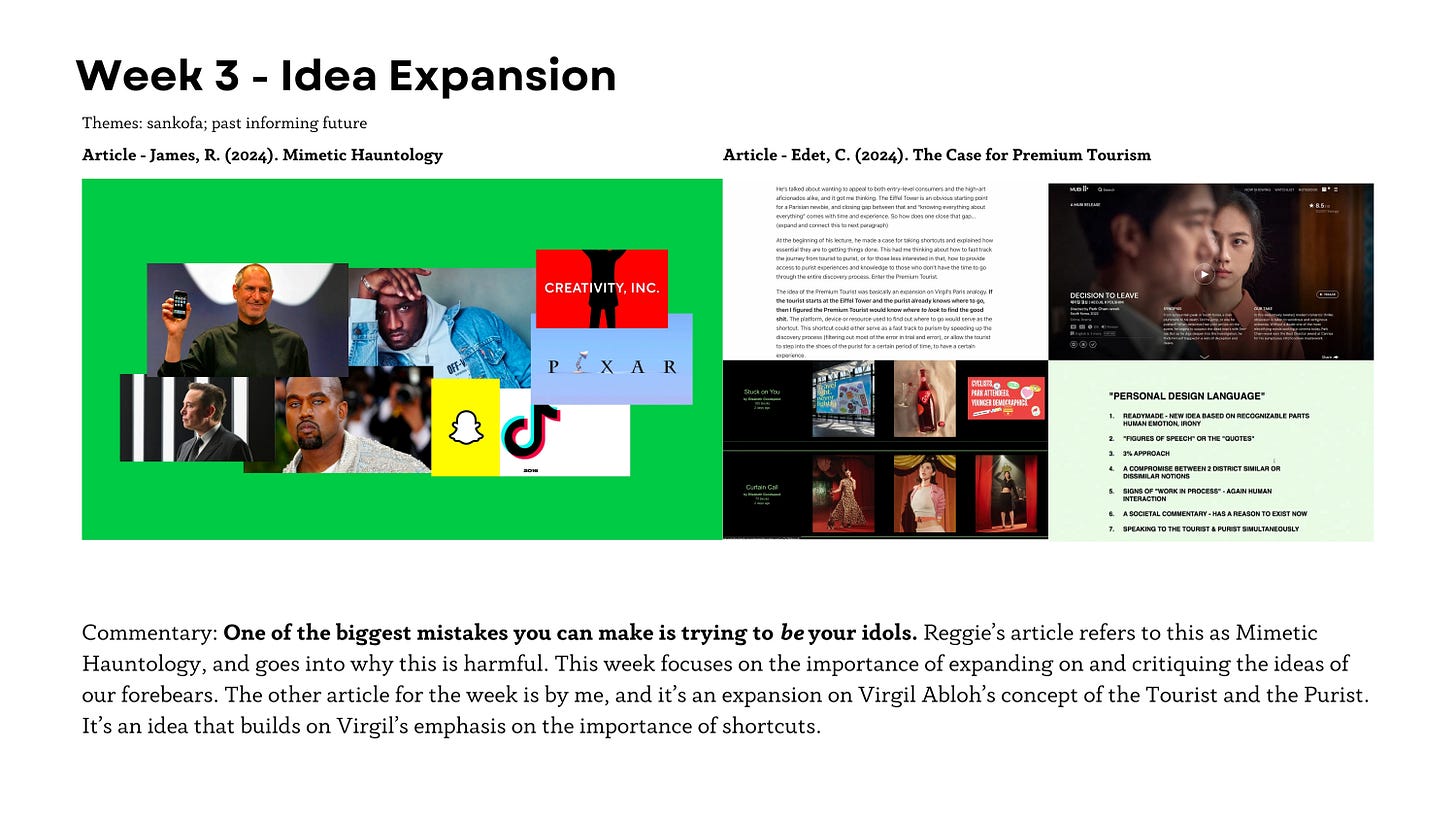
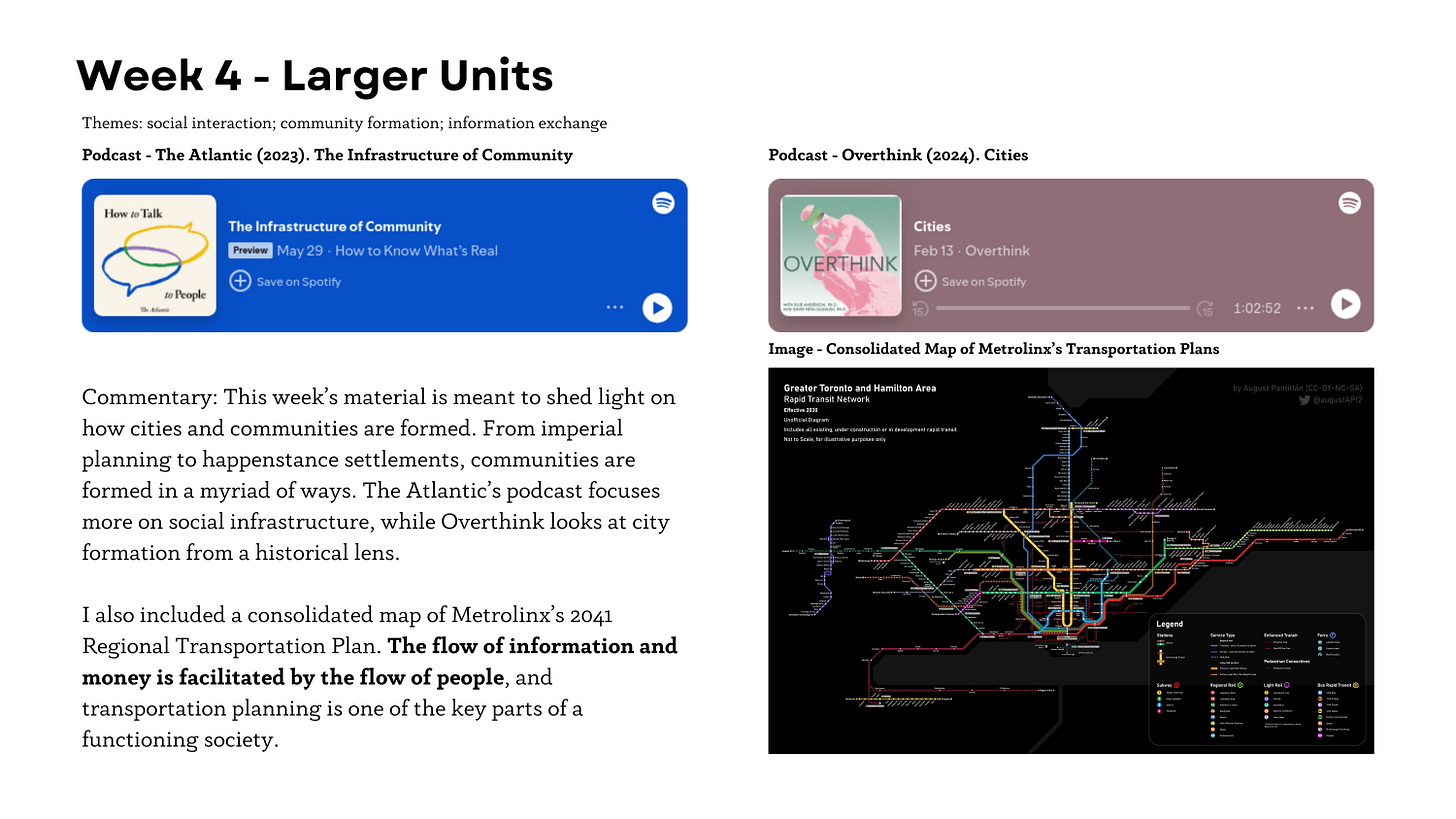


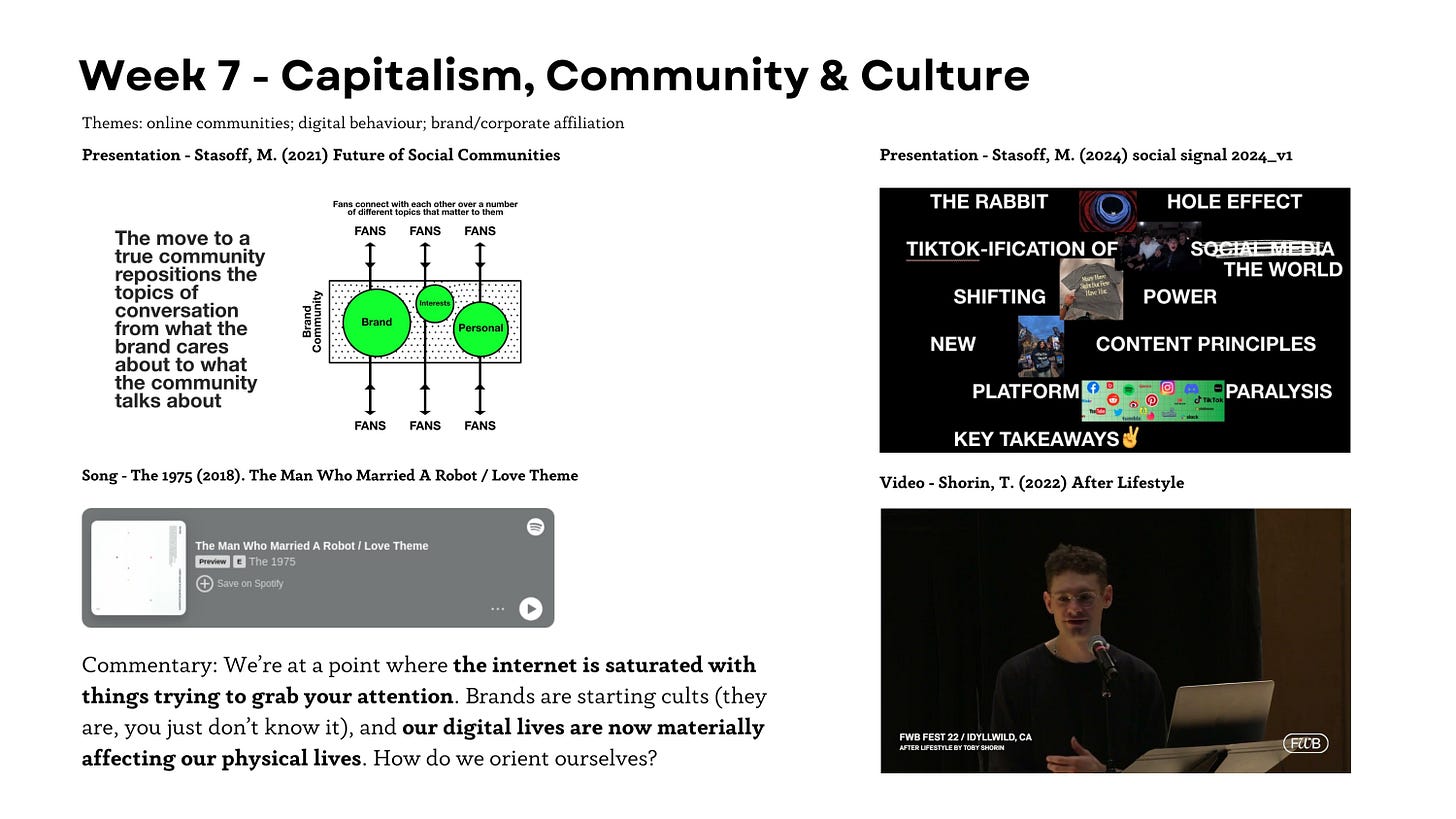
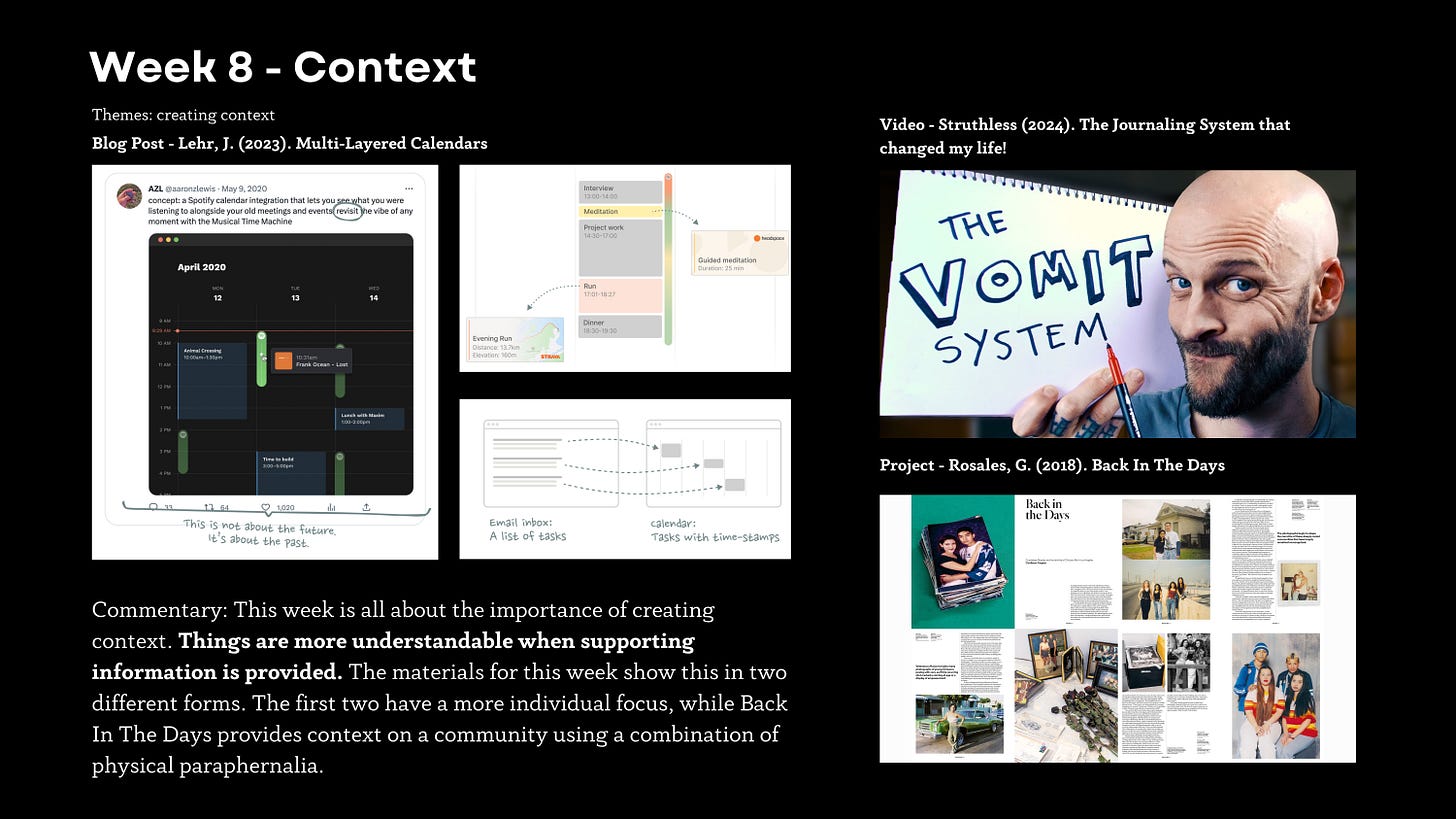
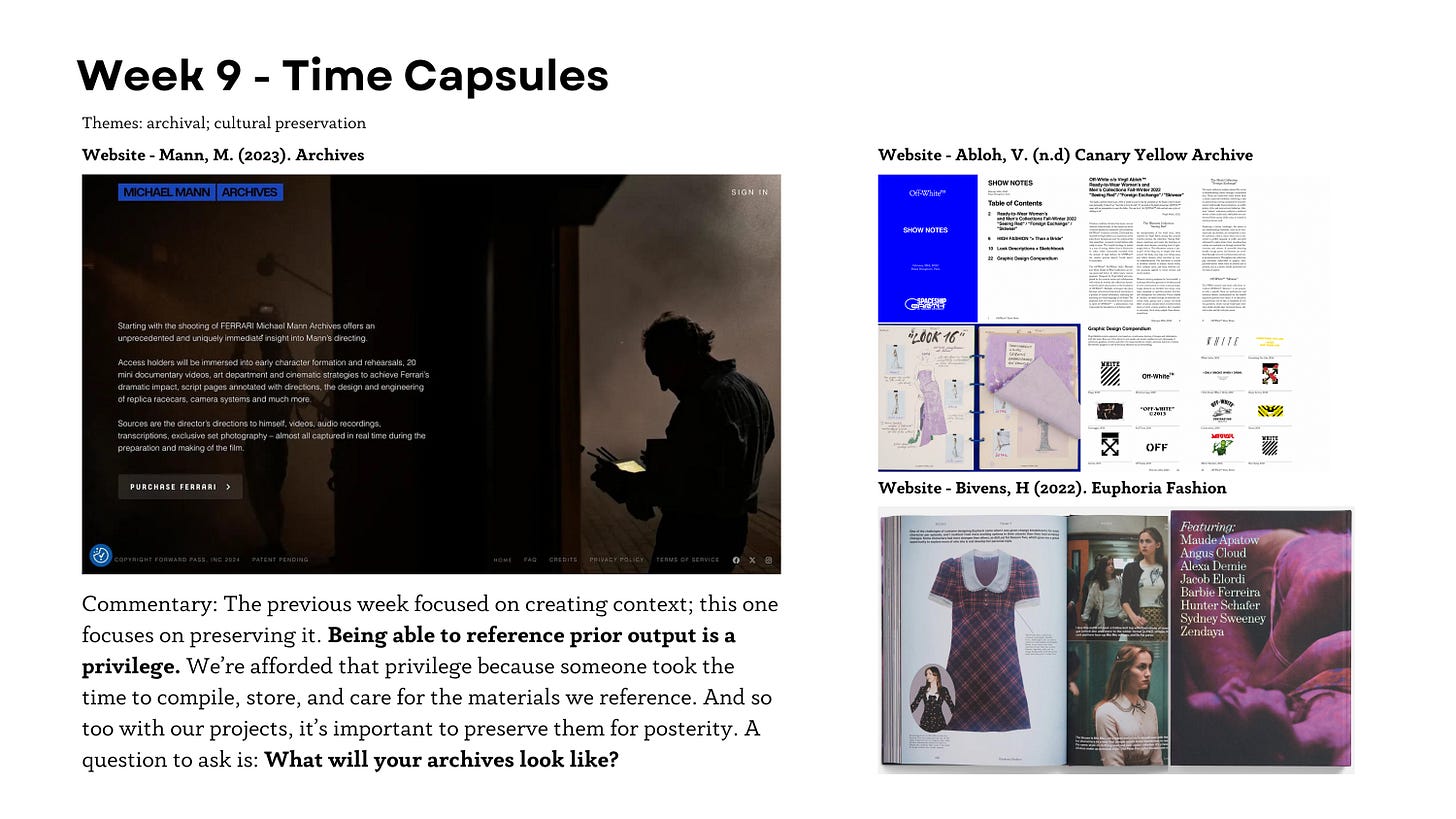
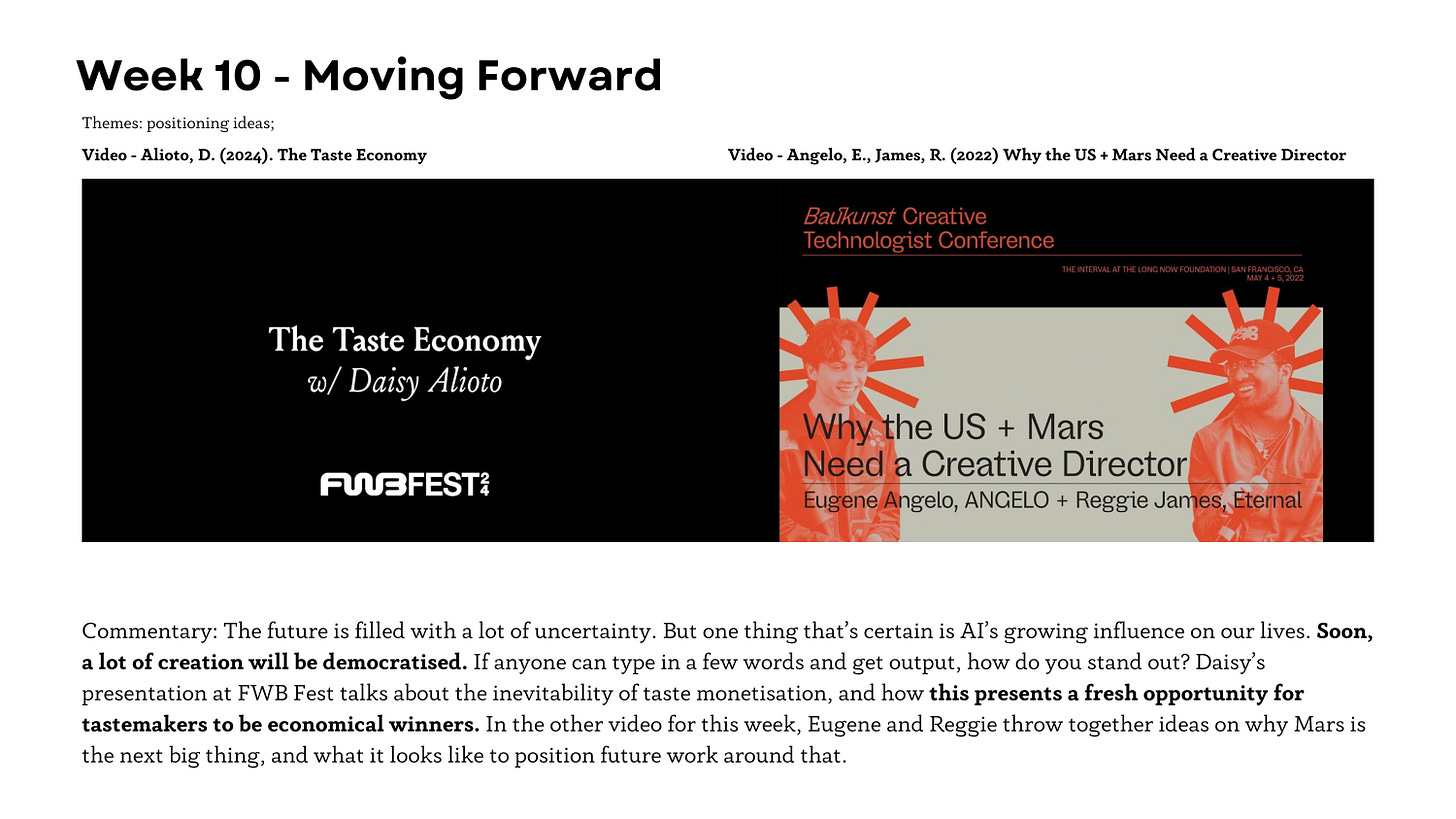
Incredible ideas I would 100% take this course & love it